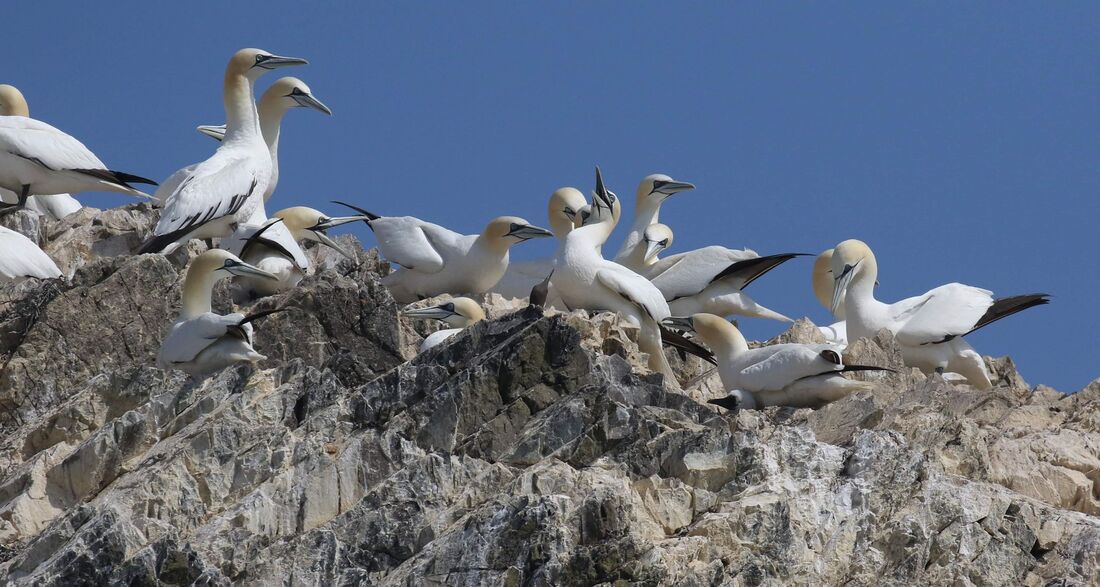|
It is at least 162 years since the first, and until now only, Gannet colony became established in Wales, on Grassholm, Pembrokeshire. The colony has grown to over 36,000 nesting pairs, protected as an RSPB nature reserve since 1948, the charity’s first land purchase in Wales. This week, The Seabird Group, a global network of researchers, announced the establishment of a second Welsh colony, off the Anglesey coast. The first photographs to confirm that chicks had hatched were taken by Steve Culley in mid-July.
Gannets are seen regularly off the North Wales coast through each summer, as non-breeding adults roam widely. As well as Grassholm, our coasts are probably visited by gannets from Ailsa Craig in Scotland’s Firth of Clyde and from Ireland’s Eye in Dublin Bay, which became established as recently as 1989. The presence of Gannets on Ynys Badrig among nesting Cormorants, Guillemots and Razorbills was noticed by a visiting birder in 2019, since when volunteers from the Seawatch Foundation have monitored numbers. Bangor University has used trail cameras to record developments on the island. Also known as Middle Mouse and lying just one kilometre off a headland east of Cemaes Bay, it is the most northerly point in Wales and according to legend, the site where St Patrick was shipwrecked. It’s early days for the colony, with 21 nests counted. Experts hope that this will be an important step for Gannets in the UK, especially as several Scottish colonies have been devastated by avian influenza this summer. Welcoming the news, RSPB Cymru reminded boat users and paddleboarders to steer clear of the island. The Anglesey marine code asks users to get no closer than 100 metres of seabird colonies and to travel at less than five knots within 300 metres. Other highlights this week include a Wood Sandpiper on the Clwyd estuary, Spotted Redshank at RSPB Conwy, two Roseate Terns at Afon Wen and a Little Gull on the Dwyfor estuary. A Cory’s Shearwater flew past Cemlyn on Friday, a Ring-necked Duck remains at RSPB Valley Wetlands and a Corncrake was reported calling west of Llanfairfechan.
0 Comments
Leave a Reply. |
Bird notesA weekly update of bird sightings and news from North Wales, published in The Daily Post every Thursday. Archives
July 2024
Categories |

 RSS Feed
RSS Feed
